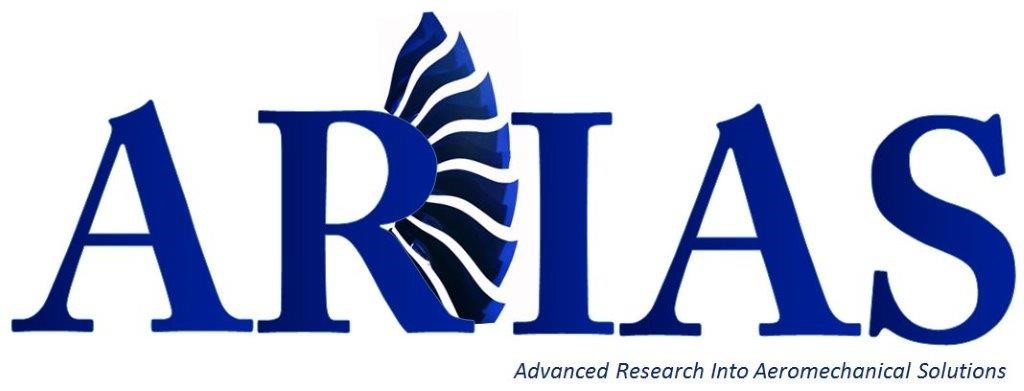ARIAS - Advanced Research Into Aeromechanical Solutions
The overall aim of the ARIAS project is to improve the design methods employed by aircraft engine manufacturers to predict aeromechanical vibrations, which occur due to the interaction of the component vibration with the air flow through the machine.

Funded by:
EU Horizon 2020
Time period:
1 Sep 2018 – 1 Sep 2022
Project partners:
- KTH Royal Institute of Technology (Coordinator), Sweden
- GKN AEROSPACE SWEDEN AB, Sweden
- ROLLS-ROYCE PLC, United Kingdom
- SAFRAN AIRCRAFT ENGINES, France
- SAFRAN HELICOPTER ENGINES, France
- SAFRAN AERO BOOSTERS, Belgium
- SIEMENS AG, Germany
- UNIVERSIDAD POLITÉCNICA DE MADRID, Spain
- GE AVIO SRL, Italy
- INDUSTRIA DE TURBO PROPULSORES S.A.U., Spain
- CERFACS, France
- UNIVERSITÀ DEGLI STUDI DI FIRENZE, Italy
- CENTRO DE TECNOLOGÍAS AERONÁUTICAS , Spain
- CENAERO, Belgium
- TECHNISCHE UNIVERSITÄT DARMSTADT, Germany
- IMPERIAL COLLEGE LONDON, United Kingdom
- ÉCOLE CENTRALE DE LYON, France
- MTU AERO ENGINES AG, Germany
- UNIVERSITY OF STUTTGART, Germany
Background
The design of engines for air transport is driven by high efficiency (more environmentally friendly) and low noise. This leads to lighter designs with fewer stages, thinner sections (blades, vanes, seals) and highly loaded components. These thinner, highly loaded components are more likely to suffer from vibrations that directly compromise the structural integrity of the machine.
It is widely acknowledged by engine manufacturers that the current methods do not reliably predict these vibrations. The ARIAS project is aiming to improve these methods by performing unique ground experiments (rig tests) that investigate key problems. The data from these experiments will improve the current understanding of the physical processes that cause these vibrations and the data will be used to improve and validate design methods.
The expected impacts of the project include the reduced risk of structural failures due to vibrations, the ability to reliably optimize engine designs for high efficiency and low noise, and the reduction in design time and costs.
Aims and objectives
The overall aim of the ARIAS project is to improve the design methods employed by aircraft engine manufacturers to predict aeromechanical vibrations, which occur due to the interaction of the component vibration with the air flow through the machine. In-practice, the limitations of current methods generally lead to over conservative designs, where unwanted aeromechanical behaviour is avoided at the expense of cost, weight and complexity in the components. Having access to more reliable design methods will enable optimisation of aeromechanically acceptable component designs, facilitating the production of more efficient, reliable and quieter engines.
The objectives of the project are following:
- improve the design methods employed by aircraft engine manufacturers to predict aeromechanical behaviour
- expand the available database of experimental aeromechanical measurements
- develop validated analytical methods that can be used to support engine certification
- reduce product development time and costs
- advance the state of the art in the understanding of the underlying physics of aeromechanical vibrations
- enable engine manufacturers to design more efficient (eco-friendly), quieter and more reliable engine
- investigate new and advanced technologies for the mitigation and monitoring of aeromechanical vibrations
To learn more about the detailed objectives, project structure and planned research activities please visit ARIAS website.
Outcomes
Outcomes of the project will be continuously published on the project website as the project progresses.
Publications
Publications coming out of this project will be listed on the project website

